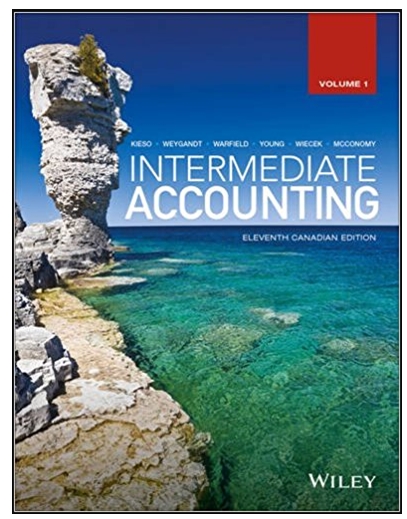From its first day of operations to December 31, 2017, Campbell Corporation provided for uncollectible accounts receivable
Question:
The balance in Allowance for Doubtful Accounts was $184,000 at January 1, 2017. During 2017, credit sales totalled $9.4 million, interim entries for bad debt expense were based on 2.5% of credit sales, $95,000 of bad debts were written off, and recoveries of accounts previously written off amounted to $15,000. Campbell upgraded its computer facility in November 2017, and an aging of accounts receivable was prepared for the first time as at December 31, 2017. A summary of the aging analysis follows:
.png)
Based on a review of how collectible the accounts really are in the "Before January 1, 2017" aging category, additional receivables totalling $69,000 were written off as at December 31, 2017. The 60% uncollectible estimate therefore only applies to the remaining $81,000 in the category. Finally, beginning with the year ended December 31, 2017, Campbell adopted a new accounting method for estimating the allowance for doubtful accounts: it now uses the amount indicated by the year-end aging analysis of accounts receivable which provides its best estimate of "expected credit losses resulting from all possible default events."
Instructions
(a) Prepare a schedule that analyzes the changes in Allowance for Doubtful Accounts for the year ended December 31, 2017. Show supporting calculations by preparing a provision matrix in good form.
(b) Prepare the journal entry for the year-end adjustment to the Allowance for Doubtful Accounts balance as at December 31, 2017.
Accounts receivables are debts owed to your company, usually from sales on credit. Accounts receivable is business asset, the sum of the money owed to you by customers who haven’t paid.The standard procedure in business-to-business sales is that... Corporation
A Corporation is a legal form of business that is separate from its owner. In other words, a corporation is a business or organization formed by a group of people, and its right and liabilities separate from those of the individuals involved. It may...
Step by Step Answer:

Intermediate Accounting
ISBN: 978-1119048534
11th Canadian edition Volume 1
Authors: Donald E. Kieso, Jerry J. Weygandt, Terry D. Warfield, Nicola M. Young, Irene M. Wiecek, Bruce J. McConomy





